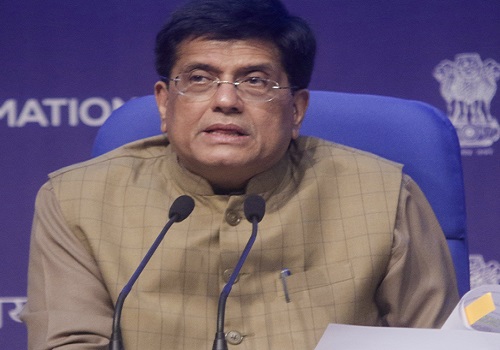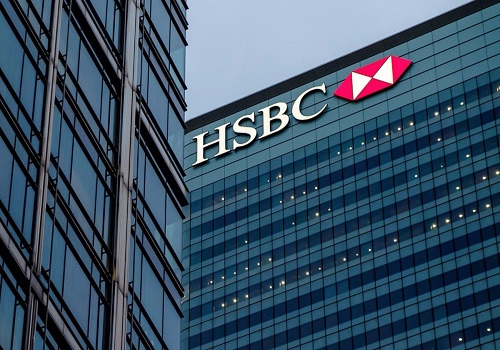India Budget Preview : Measured consolidation - Emkay Global

Follow us Now on Telegram ! Get daily 10 - 12 important updates on Business, Finance and Investment. Join our Telegram Channel
India Budget Preview :
Measured consolidation
* The upcoming budget will require policymakers to ensure the fiscal impulse is maximized to improve potential growth, while signaling adherence to medium-term fiscal sustainability. This entails continued financial sector reforms, better resource allocation, and funding by aggressive asset sales via functional infrastructure monetization, divestment/strategic sales.
* We project FY23E GFD/GDP at 6.2% after 6.8% in FY22, implying net and gross borrowing of Rs9.45tn and Rs12.9tn, respectively. Healthy tax buoyancy and divestment proceeds should likely help prop up the revenue side, in our view. We do not expect any major tax reforms, but there could be minor consumption incentives.
* Expenditure focus will be on welfare, rural and MSMEs, and physical and health infrastructure. Revex/GDP ratio will moderate, albeit higher than pre-pandemic levels at 12.7%. Capex spends should remain significantly higher than pre-pandemic levels (2.3% of GDP), especially amid a larger fiscal multiplier on employment and growth, and the continued lack of private capex.
* Sectors to watch: Infrastructure, Auto and ancillaries, Residential RE and Financials
The persisting policy trade-off between growth and fiscal consolidation
The upcoming budget faces acute policy trade-offs between nurturing a nascent growth recovery and diminishing fiscal space with challenging debt dynamics. The uneven recovery post the pandemic raises questions about the sustainability of demand, especially as the labor market is also potentially divided. For targeted policy responses, the fiscal policy tends to be more effective than monetary policy. Thus, a delicate balance needs to be maintained, ensuring the fiscal impulse is maximized to boost potential growth, even as policy adherence to medium-term fiscal sustainability is signaled. This would require: (1) the expenditure-to-GDP ratio remaining healthy; and (2) front-loaded investment-focused stimulus, especially amid its larger multiplier effect on growth and employment. This necessitates innovative reforms, better resource allocation, and possible fiscal funding by aggressive asset sales in the form of existing functional infrastructure monetization, disinvestments, and strategic sales, among others.
Slow consolidation ahead: FY23E GFD/GDP poised to moderate to 6.2% vs. 6.8% in FY22E
Amid various push and pull, FY22 GFD/GDP could just about balance at 6.8%. Positive buffers such as (1) bumper RBI surplus, (2) robust tax collection, and (3) higher nominal GDP could get offset by (1) higher payouts than budgeted on food, fertilizer subsidy, health, NREGA, Air India SPV; and (2) possible miss on ambitious divestment targets (despite possible mega LIC IPO in Mar’22). For FY23, we model slow consolidation of ~0.5-0.6% and see GFD/GDP at 6.2%. Asset-sale execution will undeniably become the key balancing aspect, especially with a healthy NMP pipeline. We pencil in a modest divestment of Rs800bn, and do not account for any major 5G spectrum windfall amid limited clarity on the reserve price.
Capex/GDP to remain steady at 2.3% in FY23; focus on welfare spending, PLI and MSME
We expect both revenue expenditure (revex) and capex to grow in FY23, with a mild skew in favor of revex. That said, the Centre’s Capex/GDP ratio will likely be steady at 2.3% -- almost 0.7-0.8pts higher than the pre-pandemic level. Capex pipeline will continue through a mix of direct fiscal and IEBR routes via PSEs. The capex focus in FY22 will be specifically on roads, railways, housing, and rural/urban infrastructure. Centre may also offer incentives to states to increase capex, especially as states’ revenue capacity could be hit with the possible expiry of the GST compensation clause.
The spending focus will likely be on welfare, rural, health and MSMEs. We will also watch for financial sector initiatives (resolutions, higher FPI limits to facilitate divestment in select PSBs on sale, etc.), which could improve the efficacy of the financial sector’s ability to fund the recovery better.
Tax buoyancy to remain healthy; non-tax revenue stream to taper
On the revenue front, we expect gross tax/GDP ratio to increase to 10.7% amid healthy tax buoyancy across segments. Though we do not see any major changes in taxes, we do not rule out minor tinkering in the form of: 1) higher standard deduction for salaried taxpayers; 2) tax incentives related to affordable housing; or 3) marginally higher customs duties on PLI-related finished/semi-finished products. Separately, lower non-tax revenue will be led by lower RBI dividends.
Net market borrowings to remain elevated at Rs9.45tn; Pressure on bonds to persist
We expect FY23 gross and net market borrowing to be ~Rs12.9tn and Rs9.45tn (Rs9.3tn in FY22). Heavy reliance on NSSF (more than 25% of GFD) will continue, while cash drawdown may increase too. We watch for announcement on FPI taxation exemptions on Euroclear, which may expedite global bond index inclusion. This could somewhat support bonds, amid elevated borrowings, RBI’s tolerance to rising yields and policy normalization by stealth, expected tighter global financial conditions and higher oil prices.
To Read Complete Report & Disclaimer Click Here
For More Emkay Global Financial Services Ltd Disclaimer http://www.emkayglobal.com/Uploads/disclaimer.pdf & SEBI Registration number is INH000000354
Above views are of the author and not of the website kindly read disclaimer


.jpg)







Top News

With Mittal Corp Limited acquisition, Shyam Metalics and Energy Limited now plans foray into...
Tag News

Monthly Debt Market Update, September 2023: CareEdge Ratings









